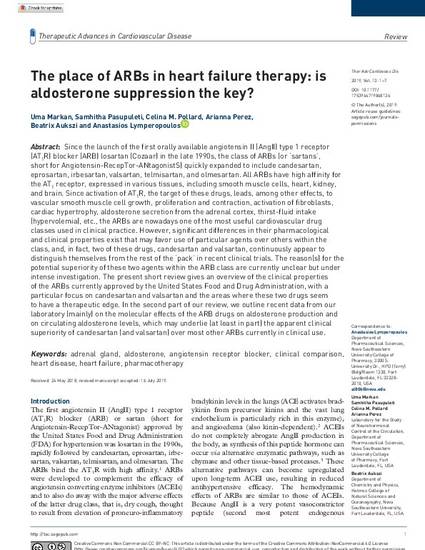
- Adrenal gland,
- Aldosterone,
- Angiotensin receptor blocker,
- Clinical comparison,
- Heart disease,
- Heart failure,
- Pharmacotherapy
Since the launch of the first orally available angiotensin II (AngII) type 1 receptor (AT1R) blocker (ARB) losartan (Cozaar) in the late 1990s, the class of ARBs (or ‘sartans’, short for Angiotensin-RecepTor-ANtagonistS) quickly expanded to include candesartan, eprosartan, irbesartan, valsartan, telmisartan, and olmesartan. All ARBs have high affinity for the AT1 receptor, expressed in various tissues, including smooth muscle cells, heart, kidney, and brain. Since activation of AT1R, the target of these drugs, leads, among other effects, to vascular smooth muscle cell growth, proliferation and contraction, activation of fibroblasts, cardiac hypertrophy, aldosterone secretion from the adrenal cortex, thirst-fluid intake (hypervolemia), etc., the ARBs are nowadays one of the most useful cardiovascular drug classes used in clinical practice. However, significant differences in their pharmacological and clinical properties exist that may favor use of particular agents over others within the class, and, in fact, two of these drugs, candesartan and valsartan, continuously appear to distinguish themselves from the rest of the ‘pack’ in recent clinical trials. The reason(s) for the potential superiority of these two agents within the ARB class are currently unclear but under intense investigation. The present short review gives an overview of the clinical properties of the ARBs currently approved by the United States Food and Drug Administration, with a particular focus on candesartan and valsartan and the areas where these two drugs seem to have a therapeutic edge. In the second part of our review, we outline recent data from our laboratory (mainly) on the molecular effects of the ARB drugs on aldosterone production and on circulating aldosterone levels, which may underlie (at least in part) the apparent clinical superiority of candesartan (and valsartan) over most other ARBs currently in clinical use.
Available at: http://works.bepress.com/beatrix-aukszi/29/

Creative Commons Non Commercial CC BY-NC: This article is distributed under the terms of the Creative Commons Attribution-NonCommercial 4.0 License (http://www.creativecommons.org/licenses/by-nc/4.0/) which permits non-commercial use, reproduction and distribution of the work without further permission provided the original work is attributed as specified on the SAGE and Open Access pages (https://us.sagepub.com/en-us/nam/open-access-at-sage).